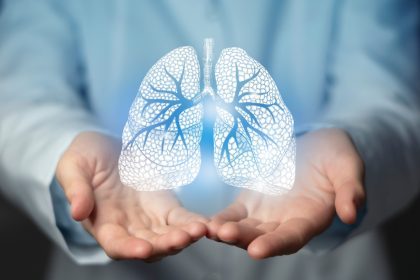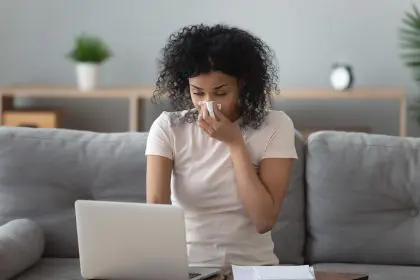Blood clots in the lungs, also known as pulmonary embolisms, can be a serious medical condition that affects your overall health. A pulmonary embolism occurs when a blood clot, typically originating in the deep veins of the legs or other parts of the body, travels to the lungs and blocks one or more arteries. This condition can have severe consequences, including damage to the lungs, reduced oxygen levels in the blood, and even death if not treated promptly. Understanding the causes, symptoms, and treatment options for pulmonary embolisms is crucial for maintaining your health and preventing potential complications.
What causes blood clots in the lungs?
Several factors can contribute to the formation of blood clots that may eventually travel to the lungs. These include:
- Deep vein thrombosis (DVT): This is the most common cause of pulmonary embolisms. DVT occurs when blood clots form in the deep veins of the legs or other parts of the body and then dislodge and travel to the lungs.
- Immobility: Prolonged periods of inactivity, such as long flights or bed rest, can increase the risk of blood clot formation. When you are immobile, blood flow in the veins slows down, making it easier for clots to form.
- Medical conditions: Certain medical conditions, such as cancer, heart disease, and respiratory diseases, can increase the likelihood of developing blood clots. Additionally, some inherited blood disorders make individuals more prone to clotting.
- Surgery and trauma: Major surgeries, especially those involving the legs, hips, or abdomen, can lead to blood clot formation. Trauma or injury to blood vessels can also trigger clot development.
- Lifestyle factors: Smoking, obesity, and a sedentary lifestyle are significant risk factors for blood clot formation. These factors can contribute to poor circulation and increased clotting tendencies.
Symptoms of blood clots in the lungs
Recognizing the symptoms of a pulmonary embolism is crucial for seeking timely medical intervention. The symptoms can vary depending on the size of the clot and the area of the lung affected. Common symptoms include:
- Shortness of breath: This is often the most noticeable symptom and can occur suddenly or gradually. It may worsen with exertion but can also be present at rest.
- Chest pain: The pain associated with a pulmonary embolism is usually sharp and stabbing. It may worsen when you breathe deeply, cough, or bend over.
- Cough: A persistent cough that may produce bloody or blood-streaked sputum can be a sign of a pulmonary embolism.
- Rapid heart rate: An elevated heart rate, known as tachycardia, often accompanies a pulmonary embolism as the heart works harder to pump blood through blocked arteries.
- Dizziness or fainting: Reduced oxygen levels in the blood can lead to dizziness, lightheadedness, or fainting spells.
- Leg pain or swelling: If the blood clot originated in the deep veins of the legs, you might experience pain, swelling, and tenderness in the affected leg.
Diagnosis and treatment of pulmonary embolism
Diagnosing a pulmonary embolism typically involves a combination of medical history, physical examination, and diagnostic tests. Common diagnostic methods include:
- D-dimer test: This blood test measures the presence of clot degradation products in the blood. Elevated levels may indicate the presence of a clot, prompting further testing.
- Imaging tests: Imaging techniques such as chest X-rays, CT scans, and pulmonary angiography can help visualize the blood vessels in the lungs and detect any blockages.
- Ultrasound: If deep vein thrombosis is suspected as the source of the embolism, an ultrasound of the legs may be performed to identify clots.
Treatment options
The treatment for a pulmonary embolism aims to prevent further clot formation, dissolve existing clots, and manage symptoms. Common treatment options include:
- Anticoagulant medications: Also known as blood thinners, these medications help prevent new clots from forming and existing ones from growing larger. Common anticoagulants include warfarin, heparin, and direct oral anticoagulants (DOACs).
- Thrombolytic therapy: In severe cases, thrombolytic medications, also known as clot busters, may be administered to dissolve the clot quickly. These drugs are usually reserved for life-threatening situations due to the risk of significant bleeding.
- Surgical intervention: In rare cases where medications are not effective or feasible, surgical procedures such as embolectomy (surgical removal of the clot) or placement of a vena cava filter (to prevent clots from reaching the lungs) may be necessary.
- Supportive care: Supplemental oxygen therapy and pain management may be required to alleviate symptoms and improve oxygen levels in the blood.
Preventing blood clots in the lungs
Preventive measures can significantly reduce the risk of developing blood clots and subsequent pulmonary embolisms. Key prevention strategies include:
- Stay active: Regular physical activity helps promote healthy blood circulation and reduces the risk of clot formation. Avoid prolonged periods of immobility by taking breaks to walk and stretch, especially during long journeys or while recovering from surgery.
- Maintain a healthy weight: Obesity is a significant risk factor for blood clots. Achieving and maintaining a healthy weight through a balanced diet and regular exercise can lower your risk.
- Quit smoking: Smoking damages blood vessels and increases the likelihood of clot formation. Quitting smoking can improve your overall cardiovascular health and reduce clotting risks.
- Manage medical conditions: Proper management of chronic conditions such as heart disease, diabetes, and high blood pressure can help reduce the risk of blood clots.
- Follow medical advice: If you have a history of blood clots or are at high risk, follow your healthcare provider’s recommendations for preventive measures, including the use of anticoagulant medications if prescribed.
Long-term effects of pulmonary embolism
The long-term effects of a pulmonary embolism can vary depending on the severity of the initial event and the effectiveness of treatment. Potential long-term consequences include:
- Chronic thromboembolic pulmonary hypertension (CTEPH): This condition occurs when clots do not fully dissolve and lead to persistent high blood pressure in the lungs’ arteries. CTEPH can cause ongoing shortness of breath, fatigue, and heart failure.
- Reduced quality of life: Individuals who have experienced a pulmonary embolism may have ongoing symptoms such as shortness of breath, chest pain, and fatigue, affecting their daily activities and overall quality of life.
- Recurrence risk: There is a risk of recurrent pulmonary embolisms, especially if the underlying risk factors are not addressed. Long-term anticoagulant therapy may be necessary to prevent future clots.
- Post-thrombotic syndrome (PTS): If the initial clot originated in the legs, there is a risk of developing PTS, characterized by chronic pain, swelling, and skin changes in the affected leg.
Conclusion
Blood clots in the lungs are a serious medical condition that can significantly impact your health if not promptly diagnosed and treated. Understanding the causes, recognizing the symptoms, and seeking timely medical intervention are crucial for preventing complications and improving outcomes. By adopting preventive measures and managing underlying risk factors, you can reduce the likelihood of developing pulmonary embolisms and protect your overall health. If you suspect you have a blood clot or experience symptoms of a pulmonary embolism, seek medical attention immediately to ensure the best possible outcome.
This story was created using AI technology.
















